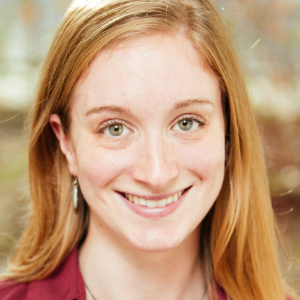Jun 30, 2020
Version 2
SPARC_Duke_PelotGrill_OT2-OD025340_HumanVagusNerve_Collection_Histology_Microscopy V.2
- Nicole A. Pelot1,
- J. Ashley Ezzell2,
- Kara A. Clissold2,
- Warren M. Grill1
- 1Duke University;
- 2University of North Carolina
- SPARCTech. support email: info@neuinfo.org

Protocol Citation: Nicole A. Pelot, J. Ashley Ezzell, Kara A. Clissold, Warren M. Grill 2020. SPARC_Duke_PelotGrill_OT2-OD025340_HumanVagusNerve_Collection_Histology_Microscopy. protocols.io https://dx.doi.org/10.17504/protocols.io.bh4cj8sw
License: This is an open access protocol distributed under the terms of the Creative Commons Attribution License, which permits unrestricted use, distribution, and reproduction in any medium, provided the original author and source are credited
Protocol status: Working
We use this protocol and it's working
Created: June 30, 2020
Last Modified: June 30, 2020
Protocol Integer ID: 38756
Keywords: Histology, Vagus nerve, Masson’s trichrome, Rat vagus nerve, Nerve morphology
Disclaimer
DISCLAIMER – FOR INFORMATIONAL PURPOSES ONLY; USE AT YOUR OWN RISK
The protocol content here is for informational purposes only and does not constitute legal, medical, clinical, or safety advice, or otherwise; content added to protocols.io is not peer reviewed and may not have undergone a formal approval of any kind. Information presented in this protocol should not substitute for independent professional judgment, advice, diagnosis, or treatment. Any action you take or refrain from taking using or relying upon the information presented here is strictly at your own risk. You agree that neither the Company nor any of the authors, contributors, administrators, or anyone else associated with protocols.io, can be held responsible for your use of the information contained in or linked to this protocol or any of our Sites/Apps and Services.
Abstract
Protocol for collection, histological processing, and imaging of human vagus nerves.
Materials
- 4% paraformaldehyde
- Mordant & tissue dye
- Ethanol
- Clearite
- Paraffin
- Xylene
- Bouin's fixative (mordant)
- Weigert's iron hematoxylin solution
- Biebrich scarlet-acid fuchsin solution
- Phosphomolybdic-phosphotungstic acid solution
- Aniline blue solution
- Acetic acid
- Microscope with color camera
Collect human vagus nerve samples.
Collect human vagus nerve samples.
We collected vagus nerve samples from embalmed human cadavers. The study was deemed exempt by the Duke University Institutional Review Board. The bodies were donated to the Duke Anatomical Gifts Program and we accessed them after they were used for medical training courses. The cadavers were embalmed with DUMC Embalming Fluid from the Carolina Biological Supply Company (33.3% ethanol, 13.2% phenol, 3.7% formaldehyde, 1% methyl isobutyl ketone, and 1% methanol).
We collected cervical vagus nerve samples bilaterally. We collected 2 cm samples approximately where a line from the rostral end of the sternum to the earlobe intersects with the vagus nerve, also corresponding to the midlevel of the thyroid cartilage. We measured from the "valley" of the common carotid bifurcation to the center of each sample.
We collected samples of the anterior and posterior subdiaphragmatic vagus nerve trunks along the esophagus between the diaphragmatic esophageal hiatus and the gastroesophageal junction.
We dyed the rostral end of each sample green to maintain orientation during processing.
We placed each sample between two histology sponges in a mega-sized histology cassette. We placed the cassettes in a tub with 4% paraformaldehyde in a 4oC refrigerator.
Perform histological processing.
Perform histological processing.
We rinsed each sample with deionized water.
We processed each sample on the long cycle in the Leica ASP300S Tissue Processor for ~10 hours: 70, 80, 95, 95, 100, 100,100% ethanol for 30, 35, 40, 40, 40, 40, 40 min, respectively; Clearite for 50min, three times; paraffin wax for 50 min, three times.
We cut each sample in half transversely and embedded the halves together cut side down in paraffin in order to obtain transverse sections starting from the center of the nerve and moving outward.
We collected 5 µm sections, placing two serial sections per microscope slide for fifteen slides.
The slides were air dried overnight at room temperature, then baked at 37oC overnight.
Of the 15 slides per sample, we stained slides 2 and 14 with Masson's trichrome as follows.
The slides were baked at 60oC for 1.5 hours and then cooled overnight.
We deparaffinized the slides and hydrated them to distilled water: xylene (2x 6 min), 100% ethanol (5 min), 95% ethanol (4 min), 70% ethanol (3 min), dH2O (2x 1 min).
We placed the slides in Bouin's fixative (mordant) at room temperature overnight.
We washed the slides in running tap water until the yellow color disappeared (~10 minutes).
We rinsed the slides in distilled water.
We placed the slides in Weigert's Iron Hematoxylin solution for 10 min.
We washed the slides in running tap water for 10min.
We placed the slides in Biebrich Scarlet-Acid Fuchsin solution for 5 min.
We washed the slides in running tap water for 2 min.
We placed the slides in Phosphomolybdic-Phosphotungstic Acid solution for 10 min.
We transferred the slides directly to Aniline Blue solution for 3 min.
We differentiated the counterstain (A. blue) in 1% Acetic Acid solution for 1 min.
We dehydrated, cleared, and coverslipped the slides: 95% ethanol (1 min), 100% ethanol (4 min), xylene (5 min).
Perform microscopy.
Perform microscopy.
Each sample was imaged at 10x using a Nikon Ti2 microscope with a Photometrics Prime 95B-25MM camera (Nikon Instruments Inc.). We selected the best of four slices for each sample based on the quality of the slice (no tearing or fraying).
